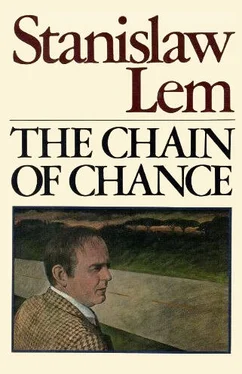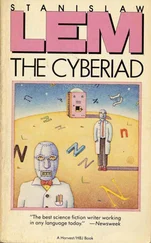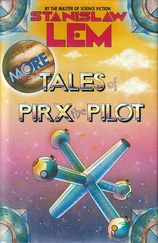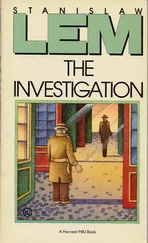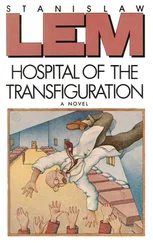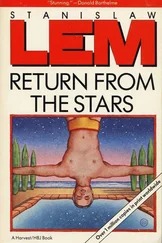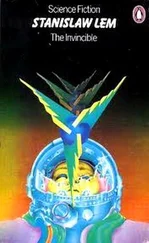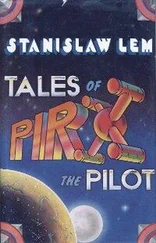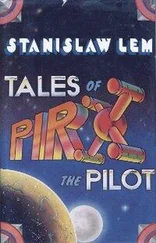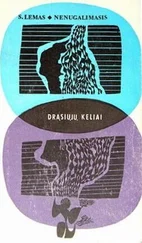Stanislaw Lem - The Chain of Chance
Здесь есть возможность читать онлайн «Stanislaw Lem - The Chain of Chance» весь текст электронной книги совершенно бесплатно (целиком полную версию без сокращений). В некоторых случаях можно слушать аудио, скачать через торрент в формате fb2 и присутствует краткое содержание. Город: New York, ISBN: , Издательство: Harcourt Brace Jovanovich, Жанр: Фантастика и фэнтези, на английском языке. Описание произведения, (предисловие) а так же отзывы посетителей доступны на портале библиотеки ЛибКат.
- Название:The Chain of Chance
- Автор:
- Издательство:Harcourt Brace Jovanovich
- Жанр:
- Год:неизвестен
- Город:New York
- ISBN:9780151165896
- Рейтинг книги:3 / 5. Голосов: 1
-
Избранное:Добавить в избранное
- Отзывы:
-
Ваша оценка:
- 60
- 1
- 2
- 3
- 4
- 5
The Chain of Chance: краткое содержание, описание и аннотация
Предлагаем к чтению аннотацию, описание, краткое содержание или предисловие (зависит от того, что написал сам автор книги «The Chain of Chance»). Если вы не нашли необходимую информацию о книге — напишите в комментариях, мы постараемся отыскать её.
The Chain of Chance — читать онлайн бесплатно полную книгу (весь текст) целиком
Ниже представлен текст книги, разбитый по страницам. Система сохранения места последней прочитанной страницы, позволяет с удобством читать онлайн бесплатно книгу «The Chain of Chance», без необходимости каждый раз заново искать на чём Вы остановились. Поставьте закладку, и сможете в любой момент перейти на страницу, на которой закончили чтение.
Интервал:
Закладка:
On his way north, however, somewhere in the vicinity of Milan, Titz suddenly swerved to the left on a straight stretch of highway, cut across a grass island, and, disregarding the blinking lights and honking horns of the other drivers, started driving down the opposite lane into the path of the oncoming traffic. Astonishingly enough, he was able to drive like this for a distance of four kilometers, forcing the oncoming cars into the most desperate tactical maneuvers. Some of these drivers later testified that he seemed to be aiming for the “right” car. To avoid a long-haul Intratrans track blocking his path, he swerved onto the island, waited till the truck had passed, then moved back into the wrong lane, where, less than a kilometer down the road, he collided with a small Simca carrying a young couple and a child. The child, though critically injured, was the sole survivor. Titz, who had been driving at high speed without a safety belt, died behind the wheel. There was speculation in the press that this was a new form of suicide in which the suicide victim tried to take others with him. In a collision involving the huge tractor-trailer he would probably have been the sole fatality, which explained why he had passed up the “chance.” The case was classified as definitely belonging to the series when reports came in concerning certain incidents that had taken place immediately prior to the accident. Just outside Rome, Titz had pulled in at a service station because of apparent engine trouble and pleaded with the mechanics to hurry because he said the “red bandit” was on his tail. At first the mechanics thought he was joking, but they changed their minds when he promised each of them ten thousand lire if they could fix his engine in fifteen minutes, and then actually kept his promise. When he gave all of the nine mechanics on duty the same “bonus,” they decided he was not all there. He might have gone unidentified had it not been that while he was backing out of the garage the German put a dent in one of the cars parked outside and drove off without stopping, though not before they were able to take down his license-plate number.
The last case dealt with Arthur T. Adams II, who checked into the Hotel Vesuvio in Naples, bought a three-week pass to the mineral baths, then dropped out a few days later when he discovered he was allergic to sulfur. At forty-nine, he was a tall and easygoing man, always on the move and something of a restless type, having tried his hand at some ten different jobs. At one time or another he had been a bank officer, a Medicare official, a piano salesman; he had taught correspondence courses in banking, worked as a judo and later as a karate instructor, and actively pursued a number of hobbies: he was a licensed parachutist and an amateur astronomer, and for the past year or so he had been publishing on an irregular basis The Arthur T. Adams II Newsletter, featuring editorials on a wide range of subjects of personal concern to its publisher. Copies of the newsletter were run off on a duplicating machine at his own expense and distributed free of charge to several dozen acquaintances. He was also a member of a number of different societies, ranging from a dianetics circle to an organization for hay-fever sufferers.
Adams first began acting suspiciously on his return trip to Rome by barreling along at high speed, then pulling over in deserted places; buying an inner tube when his car used tube-less tires; sitting out a storm in a parked car just outside Rome; and telling a highway patrolman his windshield wipers were broken when there was actually nothing wrong with them. That night he arrived in Rome and made the rounds of the hotels, looking for a vacancy—even though he had already reserved a room at the Hilton—returning to the Hilton only when he failed to find any. The next morning he was found lying dead in his bed. The autopsy disclosed early emphysema, enlargement of the heart, and generalized hyperemia typical of death due to suffocation. The actual cause of death was never determined. The coroner’s report suggested either overstimulation of the parasympathetic nervous system or suffocation caused by cardiac arrest precipitated by a severe asthmatic attack. For a while the case came under discussion in various medical journals, where the coroner’s ruling was attacked as erroneous. It was argued that only infants have been known to die of pillow suffocation, whereas an adult will immediately awaken if his nose and mouth are obstructed. Nor was there any evidence to substantiate the claim that he had suffered an asthmatic attack. Finally, there was the position of the body: Adams was found lying on his stomach, with both arms wrapped around his pillow and the pillow pressed flat against his face. But if it was a suicide, then it had no precedent in the records of forensic medicine. Some tried to attribute his death to extreme fright, but, although such cases have been known to occur, no one has yet proved nightmares to be a cause of death. After a long delay, Interpol finally decided to intervene when two letters turned up in the States, both mailed by the deceased to his former wife, with whom he remained on friendly terms following their divorce. The letters had been mailed three days apart, but they arrived at the same time because of the backlog of mail created by a postal strike. In the first letter Adams wrote he was depressed and that he was having hallucinations of the “sugar cube” variety. This was a reference to the period preceding their divorce, when Adams and his wife had been in the habit of taking psilocibin dished up in sugar cubes. Now, five years later, he had no idea what was causing these “freaky” hallucinations, which occurred mainly at night. The second letter was altogether different in both tone and content. He was still having hallucinations, but he was no longer alarmed now that he knew what was causing them.
A detail you’d never suspect as being important has led me to the most incredible discovery. I’ve managed to get my hands on some material for a series of articles dealing with a completely new type of crime, a crime that’s not only unmotivated but also indiscriminate, in the same way that scattering nails all over the road is an indiscriminate crime. You know I’m the last person to exaggerate, but the press won’t be the only ones to sit up and take notice when I start publishing this stuff. But I’ve got to be careful. This material is too hot to keep around here. Don’t worry, though; I’ve got it stored someplace where it’s good and safe. Not another word till I get back. Will write from Rome as soon as I can. This is the sort of bonanza every journalist dreams about. And what a lethal one it is.
There’s no need for me to elaborate on the intensive search that was made into the whereabouts of Adams’s secret hiding place. The search proved to be a waste of time. Either he didn’t know anything and the letter was just another one of his hallucinations, or he had done too good a job of hiding the material.
Adams’s death brings to a close the list of tragic events originating in and around Naples. Besides the Italians, the investigation involved the law-enforcement agencies of Sweden, Germany, Austria, Switzerland, and the United States, who were drawn into the case because of the victims’ nationality. Interpol, which was supervising and coordinating the case, revealed a number of irregularities and minor omissions in the course of their investigation—such as failing to report missing hotel guests right away, or neglecting to perform an autopsy despite indications of a violent death—but in no instance were they able to establish any criminal motives, attributing the mistakes either to sloppiness, to negligence, or to self-interest.
Interpol was the first to resign from the case, with all the other agencies—including the Italian—following suit. It was reopened only on the initiative of Mrs. Ursula Barbour, Adams’s chief executor. Adams had left an estate worth ninety thousand dollars in stocks and bonds, and Mrs. Barbour, a woman in her eighties who had been Adams’s foster mother, decided to use a part of the estate for apprehending the murderers of the man she regarded as her son. After familiarizing herself with the circumstances of his death, in particular with that last letter addressed to his former wife, she became thoroughly convinced that he was the victim of a crime so cunningly executed it had defied the efforts of all the various international agencies combined.
Читать дальшеИнтервал:
Закладка:
Похожие книги на «The Chain of Chance»
Представляем Вашему вниманию похожие книги на «The Chain of Chance» списком для выбора. Мы отобрали схожую по названию и смыслу литературу в надежде предоставить читателям больше вариантов отыскать новые, интересные, ещё непрочитанные произведения.
Обсуждение, отзывы о книге «The Chain of Chance» и просто собственные мнения читателей. Оставьте ваши комментарии, напишите, что Вы думаете о произведении, его смысле или главных героях. Укажите что конкретно понравилось, а что нет, и почему Вы так считаете.
